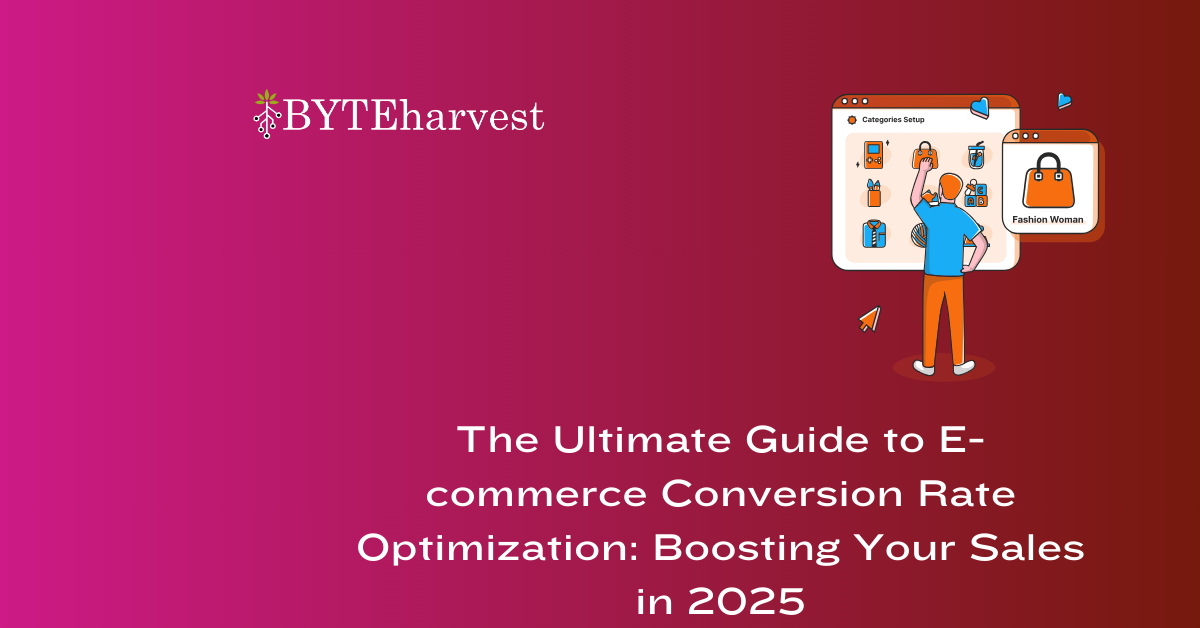How to Optimize Your E-commerce Website for Higher Conversions in 2025
In today’s competitive digital marketplace, understanding and optimizing your e-commerce conversion rate is crucial for business success. This comprehensive guide explores the latest strategies, tools, and best practices for conversion rate optimization (CRO) in 2025. Whether you’re struggling with cart abandonment or looking to boost your overall conversion rates, this article will provide actionable insights to help you increase your e-commerce conversion rates and drive more sales.

What is E-commerce Conversion Rate and Why Does it Matter in 2025?
A conversion rate is the percentage of website visitors who complete a desired action, such as making a purchase. In e-commerce, understanding your conversion rate means knowing exactly how effectively your website turns visitors into customers. The digital landscape of 2025 has made optimization more crucial than ever, with mobile commerce and user experience playing increasingly important roles.
For e-commerce businesses, a good conversion rate can mean the difference between thriving and merely surviving. With rising customer acquisition costs, optimizing your conversion rate has become one of the most cost-effective ways to boost your bottom line.
What Makes a Good E-commerce Conversion Rate in Today’s Market?
Average conversion rates vary significantly across different industries and platforms. While the average e-commerce conversion rate typically hovers between 1-4%, top-performing stores can achieve much higher numbers. Understanding conversion rate benchmarks for your specific niche helps set realistic goals for your optimization efforts.
Your current conversion rate should be viewed as a baseline for improvement. By implementing effective CRO strategies, even small improvements in your conversion rate can significantly increase revenue without requiring additional traffic.
How Can You Optimize Your Product Pages for Better Conversions?
Product pages are crucial touchpoints in your conversion funnel. Effective product descriptions, high-quality images, and clear pricing information help build trust and reduce uncertainty. Adding social proof through customer reviews and ratings can further enhance your product page’s ability to convert visitors into buyers.
Mobile optimization of product pages is essential, as an increasing number of users shop via mobile devices. Ensure your product pages load quickly and provide an excellent user experience across all device types to maintain high conversion rates.
What Role Does Cart Abandonment Play in Conversion Rate Optimization?
Cart abandonment represents one of the biggest challenges in e-commerce, with cart abandonment rates often exceeding 70%. Understanding why customers abandon their carts is crucial for developing effective optimization strategies. Common issues include unexpected shipping costs, complicated checkout processes, and lack of payment options.
Implementing strategies to reduce cart abandonment rate can quickly increase your overall conversion rate. This might include offering free shipping thresholds, simplifying the checkout process, and using cart abandonment emails to recover lost sales.
How Can You Optimize Your Checkout Process for Higher Conversion?
The checkout process is where many e-commerce sites lose potential customers. A streamlined checkout experience is essential for maintaining high conversion rates. This includes minimizing form fields, offering guest checkout options, and providing multiple payment methods.
Mobile optimization of the checkout process is particularly crucial, as mobile conversion rates tend to be lower than desktop. Ensuring your checkout process works smoothly on mobile devices can help improve your overall conversion rate.
What Role Does User Experience Play in Conversion Rate Optimization?
User experience directly impacts your website’s conversion rate. From website design to navigation, every aspect of how users interact with your website affects their likelihood to convert. Tools like Google Analytics can help you understand how visitors navigate your site and identify potential improvement areas.
Implementing features like live chat can enhance the user experience by providing immediate support to potential customers. A positive user experience helps build trust and encourages visitors to complete their purchases.
How Can You Use Data to Drive Your CRO Strategy?
Data-driven decision-making is essential for effective conversion rate optimization. Tools like Google Analytics provide valuable insights into user behavior, helping you identify areas where your conversion funnel may be leaking potential customers. Understanding your target audience through data analysis helps optimize your website more effectively.
Using A/B testing and other conversion rate optimization tools helps validate your optimization efforts. This systematic approach to testing and improvement ensures your CRO strategies are based on real user behavior rather than assumptions.
What Are the Most Effective CRO Strategies for Mobile Commerce?
Mobile ecommerce continues to grow, making mobile optimization crucial for success in 2025. Understanding mobile conversion rates and optimizing for mobile devices requires specific strategies, including responsive design, touch-friendly interfaces, and simplified navigation.
Mobile users often have different behaviors and expectations compared to desktop users. Adapting your CRO strategies to account for these differences can help improve your mobile conversion rates significantly.
How Can You Leverage Social Proof to Boost Conversions?
Social proof is a powerful tool for increasing conversion rates. Customer reviews, testimonials, and user-generated content can help build trust and encourage purchases. Displaying social proof effectively throughout your website can help convince hesitant shoppers to make a purchase.
Strategic placement of social proof elements on product pages and during the checkout process can help reduce uncertainty and boost conversion rates. This is particularly important for e-commerce brands looking to establish credibility with new customers.
What Tools and Technologies Can Help Improve Conversion Rates?
Various tools for ecommerce are available to help optimize conversion rates. From heat mapping tools to A/B testing platforms, these technologies provide valuable insights and capabilities for improving your website’s performance. Marketing strategies should include the use of appropriate tools to track and improve conversions.
Live chat solutions and personalization tools can help provide better customer service and more relevant experiences, both of which can boost conversion rates. Implementing the right combination of tools can help you increase your conversion rates more effectively.
Key Points to Remember:
– Understanding your current conversion rate is essential for setting improvement goals
– Mobile optimization is crucial for success in 2025’s e-commerce landscape
– Cart abandonment reduction strategies can significantly improve conversion rates
– User experience plays a vital role in conversion rate optimization
– Data-driven decision-making is essential for effective CRO
– Social proof can help build trust and increase conversions
– The checkout process must be optimized for both desktop and mobile users
– Regular testing and optimization are crucial for maintaining high conversion rates
– Tools and technologies can help track and improve conversion rates
– Understanding industry benchmarks helps set realistic conversion goals

